This is where we say farewell forever to drab, soft-edged Toyotas. With this new 2014 Toyota Corolla Altis, Japan’s biggest automaker has completed their personality transplant – started by the XV50 Camry and continued with the 2013 Vios – and aim for the sort of style-friendly high ground that Mazda and the Koreans have called home.
Toyota’s reinvention of itself in the sedan game has been widely successful, not least with the B-segment Vios. UMW Toyota says that it has received over 20,000 bookings, merely two months from the Vios’ local launch here. That’s about ten times more than what the similarly priced (but more value-driven) Proton Suprima S has managed in its five-month tour so far.
The birth of the new Corolla Altis brings the death of the second-generation model, which has long lost the class title to the Honda Civic. Can the new Toyota take the now-shrinking but richly-fielded C-segment it once called its own back? Let’s find out.
If not absolutely sleek, this new 2014 model is now proportioned in contemporary fashion, its edges chamfered off for minimal offence, and its aesthetic persona blended in to the general meld of cars. It’s keeping up with the times, some would say.
Not that the latest Altis is without its distinctive elements, that is. Looking nothing like its predecessor, it’s marked out by the unusual sculpting of its headlamps, which flow directly below the chrome grille’s top bar. The secondary lines continue into the light housings, with LED daytime running lights positioned in between the ‘blades’.
It’s perhaps unfortunate that, at a fleeting glance, your modern Toyota sedan is not as instinctively recognisable as it once was. It’s no longer a mini-Camry, nor is a maxi-Vios. It has shed its boring image for some much-needed ‘stand out from the crowd’ quality. In any case, it’s good to see Toyota producing cars that aren’t wilfully forgettable anymore.
In another sense, the Altis is as Toyota as a Toyota can be – straightforward in almost every way. As the brand’s mid-sized sedan, it strays even deeper into territory that most have floundered in – very close into the entry-level D-segment market. In fact, the top 2.0V model with the “Additional Safety Package” goes for RM139,900, RM100 more than the base Honda Accord 2.0 VTi.
Sandwiched between the flourishing B-segment and ever-growing D-segment, the Civic-class, as it once was, now has a very small playing field with little potential to grow. Nevertheless, the Altis is a lot of car for the money, Toyota says, and stands more than a fighting chance against its class.
While still based on the existing tried and tested design, the platform has been stretched by a whole 100 mm to achieve a class-competitive wheelbase of 2,700 mm. That’s the same as the Hyundai Elantra, Kia Cerato and the new Nissan Sylphy, and 30 mm longer than the current Honda Civic.
Thus, it provides at least as much room inside as its rivals, though by retaining its rear torsion beam out back, it still lacks the Honda’s independent rear suspension. Packaged with MacPherson struts up front as before, is has the same suspension layout as the Nissan and the Korean pair.
The engine and gearbox are complete carryovers, which in this case, is not such a bad thing. The 2.0 litre Dual-VVTi 3ZR engine with its 145 PS at 6,200 rpm and 187 Nm of torque at 3,600 rpm is still relatively fresh, having only been in service since the second-generation car was given a major facelift in 2010.
The same applies to the CVT transmission with its so-called ‘seven-speed Sports Sequential Shift’. The American market, in particular, has just gained access to this CVT ‘box through its new-generation Toyota Corolla mere months ago, over three years after we did. Don’t say that we always get things late, now.
Expecting a brand new engine and gearbox package merely three and a half years down the road would be unrealistic. A case of the Vios and Camry 2.0’s decade-old engines and four-speed autos, this definitely is not.
Cars like this tend to attract customers as much for their accessories as for their basic mechanical make-up these days, and on this score the new Altis is a step up from its basic predecessor. It’s not quite up to the standards of the Koreans – especially not the feature-rich Kia Cerato – but it at least matches the Honda.
It has, for instance, LED projector headlights, smart keyless entry system (both in this top 2.0V form only) and Bluetooth connectivity. The seven-inch touchscreen head unit you see here is standard on 2.0 litre models, though GPS navigation remains a cost option. On a RM136,000 car, that’s a little steep, don’t you think? Also an option is an Aerokit that looks decent enough though funnily enough it includes a fourth stop light integrated in the rear spoiler. Afterthought, much?
The extra RM3,900 asked for the “Additional Safety Package” bumps the airbag count to seven (a class-leading figure), but is only available on the 2.0V variant. So yes, those getting lesser models (1.8 E for RM114,000; 2.0G for RM123,000) are stuck with just two airbags.
In a perfect world, the package should be made available across the range. Or better yet, just fit them as standard, as it should be in the first place. This is the first time additional airbags are offered as an option in Malaysia, and it’ll be interesting to see how buyers react to such a choice.
The crucial stability and traction control systems are thankfully not packaged into the bizarre cost option, but again are fitted exclusively to the top-of-the-range 2.0V model. Note to Toyota: you’re already charging premium prices, so don’t skimp on essential safety features, please?
Let’s move on to the more subjective stuff, shall we? Performance wise, the Toyota isn’t half bad. Initially, you don’t feel like you’re getting value on the go front from this 2.0 litre machine. Probe further, however, and it doesn’t take long to discover that it pulls rather hard for its kind.
Its engine serves its peak power late in the day though, so you’ll have to be rather hard on it to get the best results. But in no time does it ever feel sluggish, thanks to the excellent CVT gearbox. Toyota claims that it goes to 100 km/h in 10 seconds flat, on to a top speed of 180 km/h.
Unfortunately, the media drive only included the 2.0V model, so no comments yet on the 1.8 litre variant, which apparently is 0.2 second quicker to 100 km/h and tops out 5 km/h faster.
Back to the transmission, it works terribly well – far better than you’d think a CVT has a right to. The ‘seven-speed’ CVT handles the available power fantastically, fully exploiting the engine’s limited flexibility in a tremor-free way. It barely feels like a CVT unit, in fact, running a well-simulated shift pattern by default.
The rubber-band effect expected from a CVT is non-existent here, replaced with a feel that’s no less direct than that of a traditional torque convertor-type automatic transmission. It has a sophisticated working pattern too, with a dynamic shift programme that deduces from your driving style when you want to stay in lower gears for longer.
If you’re in the mood, it can be fun. That’s more than what you can level at, say, the Mitsubishi Lancer’s highly restrictive and noisy transmission. The engine is wonderfully smooth and quiet too, whatever the pace, in a way that the Honda Civic never is.
This car can be hustled through corners at a pace that is quite remarkable given its obvious comfort-biased approach. Fat, low-profile (215/45 R17) Michelin Pilot Sport 3 tyres certainly help, but the well engineered chassis is the key here.
Don’t get excited just yet, as it’s not quite as appealing as the Ford Focus in the handling department. While its steering may feel overlight (typical of Toyotas), the rim is communicative enough when you corner hard, and that’s something the well-balanced chassis does not discourage, to a point.
Of course, the suspension’s task is eased by the comparatively smaller output it has to handle, but it’s clear that it is fundamentally well behaved. The car is obedient, unbothered by bumps and, unlike the Altis of old, does not pitch back and forth like a trawler heading out to sea. It is surprisingly entertaining and feels very securely planted on highways, even when you zone in on its top speed.
When the going gets tough, however, you do start to realise that there a slightly mushy feel to its low-geared and slow steering, which makes it seem less well connected through fast corners. Not that it doesn’t corner well. There’s bags of grip, but you’d wish the steering is quicker and more precise.
No, then, this isn’t the most sporting of drives: there’s a bit too much roll in the faster stuff, and the power steering is fazed by a numbness in the tactile connection the car makes with its driver. Still, it remains capable through the twisty stuff if you’re smooth enough, and with judicious use of the quick-reacting paddle shifters, rather fast too.
But like its smaller brother, the Vios, there’s something unexciting about its progress, leaving you with the feeling that, really, you oughtn’t to be going this fast after all. And it’s hard not to get to the impression that, in its heart of hearts, no matter how aggressive it looks, that’s what Toyota wants, too.
What isn’t surprising is that the Altis is a very comfortable car to be in. It manages to serve up a decent drive with the most pillowy ride of its class – its wheels surmounting bumps, humps, ripples and lumps with the cossetting serenity no other C-segment sedan can offer.
The Cerato’s comfort levels are close to a match of the Toyota’s but the Kia’s handling characteristics are much worse off because of it. Despite its ageing platform, the Corolla Altis strikes a much better compromise between taut body control and all-cushioning comfort.
Speaking of comfort, the new car scores big with particularly comfortable seats – both front and back. You always feel cushioned in here, and it is quiet on all fronts. It’s the best in class in terms of cabin comfort and refinement, Toyota claims, and it’s hard say otherwise.
The rear seats are wide and comfy, though not quite as supportive as the ones up front. It can be reclined slightly too, which is great. It’s a very accommodating and inviting cabin, this, even next to its rapidly improving rivals. The Ford Focus’ rear quarters for instance, feels far more restricted in comparison.
Another remarkable aspect is the cabin quality, which is, believe it or not, almost European in feel. The main touch points are all covered in quality soft-touch materials, including the tops of the rear door cards. These are hard even in the Volkswagen Golf and Ford Focus, let alone the Honda Civic which is hard everywhere.
It’s not all good, though. The steering wheel is covered in “leather” that both looks and feels cheap, and the dashboard is full of blank plates. There are three blank buttons next to the power socket, and two more by the front cup holders. Most of these buttons would be completely useless in our markets (think seats heaters), but it would have been nice if they were hidden rather than being left out as they are.
There’s no questioning that the 2014 Toyota Corolla Altis is a good car. It’s a good step forward for the brand, and with its newfound aggressive looks, it should no longer be thought of as an old man’s transport. It’s also well thought-out, would doubtless prove convenient and satisfying to own, and offers the reassurance of the trusted brand.
For enthusiastic paultan.org readers, its fashionable and moderns clothes would prove rather pleasing too, while its silky mechanical package is still as good as ever. That it is as capable to drive as it is comfortable and refined seals it – objectively, then, it’s the one to have in this segment.
Not if you value, well, value over anything else, though. It’s not great in that respect, let’s not devalue that fact. It’s the Toyota’s major downfall, next to the alarming safety-at-a-price quagmire. But remember, this is the priciest Altis – lesser versions may fare better against the opposition. Either way, don’t be surprised to see plenty of these of the road soon enough.
Looking to sell your car? Sell it with Carro.

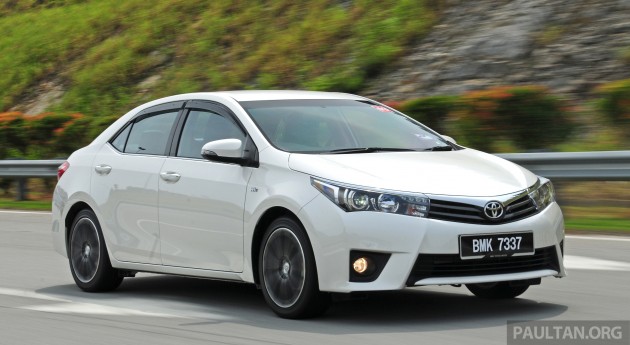

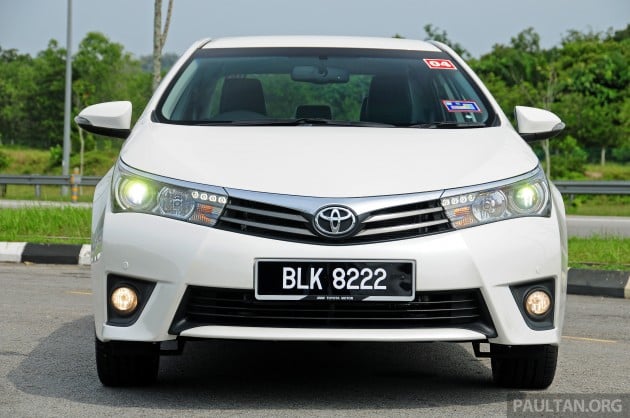
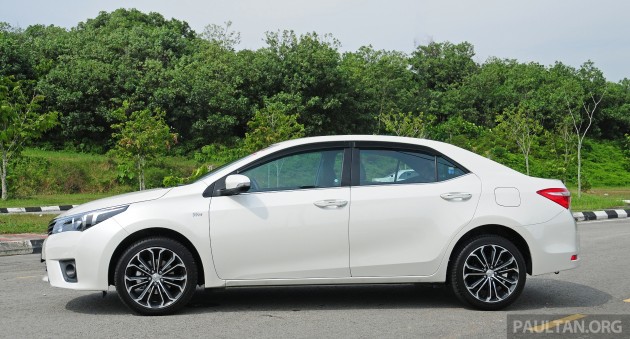



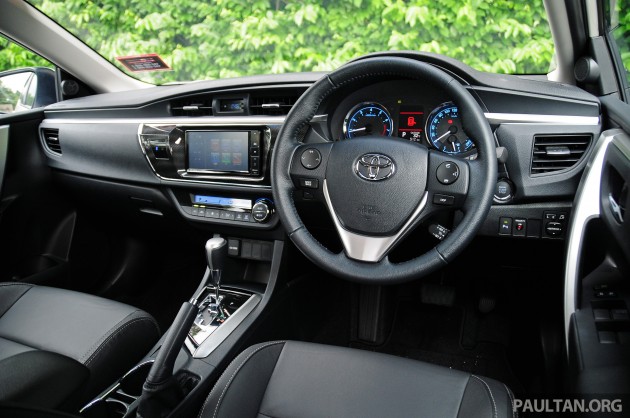













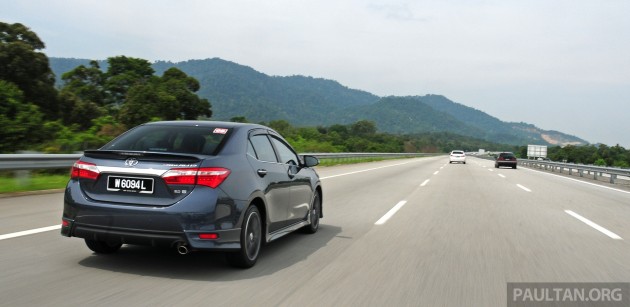

































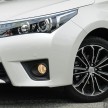




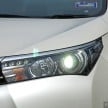




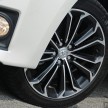



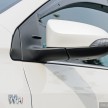
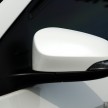
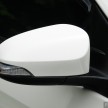











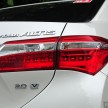





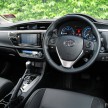
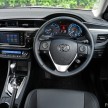


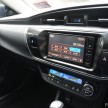

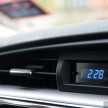
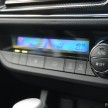

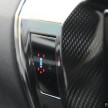

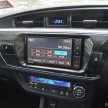

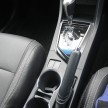
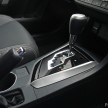
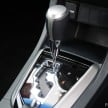










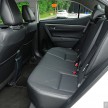
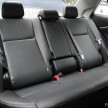




























AI-generated Summary ✨
Comments reflect a mix of positive and negative sentiments about the 2014 Toyota Corolla Altis 2.0V. Many praise its sleek design, reliability, and smooth CVT transmission, emphasizing Toyota's reputation for durability. There is concern over the high price point, especially for the top variant, and questions about the value of safety features, noting that essential safety systems are only available as options on certain models. Some critics point out the limited interior features and safety ratings, with comparisons to competitors like Mazda3, Focus, and Kia Forte. Resale value, fuel efficiency, and safety ratings are also discussed, with opinions divided on whether the car offers good value for money. Overall, the comments show interest in the model but highlight significant reservations about its pricing and safety offerings.